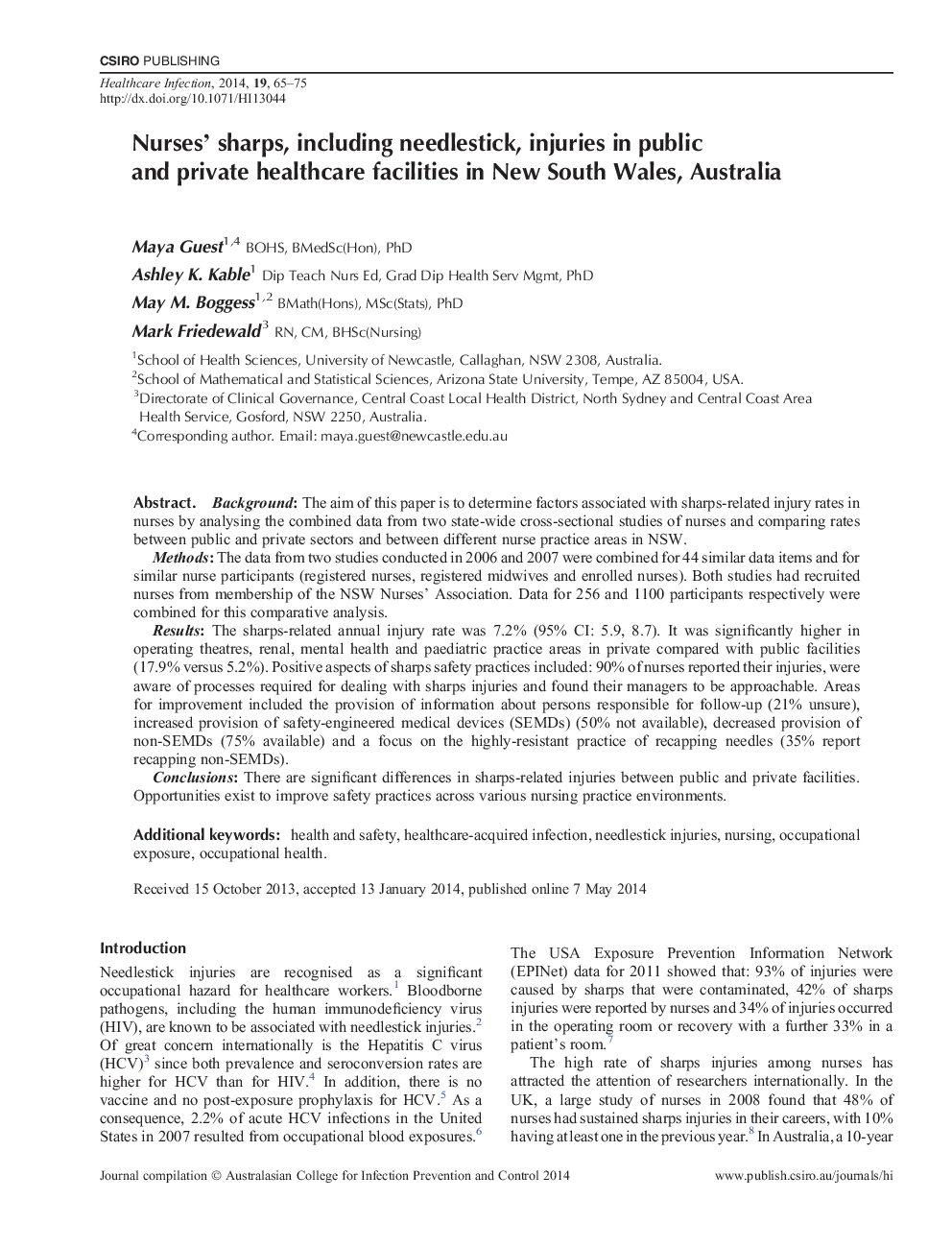| Article ID | Journal | Published Year | Pages | File Type |
|---|---|---|---|---|
| 2685348 | Healthcare infection | 2014 | 11 Pages |
BackgroundThe aim of this paper is to determine factors associated with sharps-related injury rates in nurses by analysing the combined data from two state-wide cross-sectional studies of nurses and comparing rates between public and private sectors and between different nurse practice areas in NSW.MethodsThe data from two studies conducted in 2006 and 2007 were combined for 44 similar data items and for similar nurse participants (registered nurses, registered midwives and enrolled nurses). Both studies had recruited nurses from membership of the NSW Nurses’ Association. Data for 256 and 1100 participants respectively were combined for this comparative analysis.ResultsThe sharps-related annual injury rate was 7.2% (95% CI: 5.9, 8.7). It was significantly higher in operating theatres, renal, mental health and paediatric practice areas in private compared with public facilities (17.9% versus 5.2%). Positive aspects of sharps safety practices included: 90% of nurses reported their injuries, were aware of processes required for dealing with sharps injuries and found their managers to be approachable. Areas for improvement included the provision of information about persons responsible for follow-up (21% unsure), increased provision of safety-engineered medical devices (SEMDs) (50% not available), decreased provision of non-SEMDs (75% available) and a focus on the highly-resistant practice of recapping needles (35% report recapping non-SEMDs).ConclusionsThere are significant differences in sharps-related injuries between public and private facilities. Opportunities exist to improve safety practices across various nursing practice environments.
